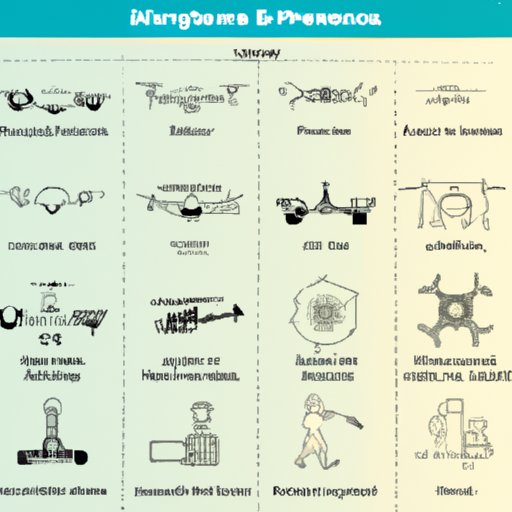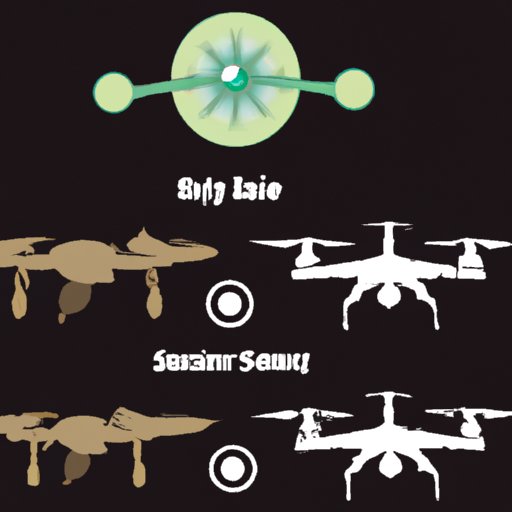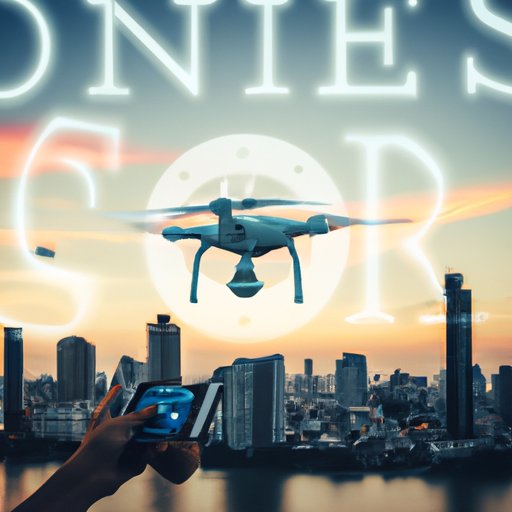Introduction
Drones, also known as unmanned aerial vehicles (UAVs), have become an increasingly popular and widely used form of technology. But when were drones invented? This article will explore the history of drone invention, from the earliest concepts to the modern-day applications of this technology. Additionally, it will examine the impact of drone technology on society, as well as the implications of its use.

History of Drone Invention: From Concept to Reality
The concept of drones has been around for centuries, with references to “flying machines” appearing in literature as early as the 12th century. However, the first recorded attempt at creating a working unmanned aerial vehicle (UAV) was made in 1849 by Austrian soldiers besieging Venice. They attempted to launch 200 unmanned balloons filled with explosives over the city walls, though the experiment failed.
In 1917, during World War I, the first successful flight of an unmanned aerial vehicle occurred. The Kettering Bug, developed by American engineer Charles Kettering, was able to fly autonomously for up to 30 minutes. The Bug was designed as a self-guided missile that could be used to attack enemy targets without endangering human life.
Since then, drone technology has advanced significantly. In the 1950s, the United States began using drones to spy on Soviet military installations and test their nuclear weapons capabilities. In the 1970s, the Israeli Air Force developed the first operational UAVs, using them to monitor the movement of enemy forces. By the 1980s, drones had become a key tool of the Cold War, with both the U.S. and Soviet Union fielding fleets of UAVs.
The Milestones of Drone Technology: A Timeline of Development
The development of drone technology has seen many milestones over the years. Here are some of the most significant events in the history of drone invention:
- 1917: The first successful flight of an unmanned aerial vehicle occurs with the Kettering Bug.
- 1950s: The U.S. begins using drones to spy on Soviet military installations.
- 1970s: The Israeli Air Force develops the first operational UAVs.
- 1980s: Drones become a key tool of the Cold War.
- 1990s: The U.S. military begins developing unmanned combat air vehicles (UCAVs).
- 2000s: Smaller, more affordable drones become available to civilians.
- 2010s: Commercial applications of drones become widespread.
These milestones demonstrate how far drone technology has come since its invention, and how it has evolved to suit different needs and applications.
The Pioneers Behind Drone Invention: Who Invented the Drone?
While there is no single inventor of drones, several individuals and organizations have played a key role in the development of this technology. Most notably, American engineer Charles Kettering is credited with inventing the first unmanned aerial vehicle. Additionally, the U.S. military has been instrumental in the advancement of drone technology, investing heavily in research and development.
Other notable figures in the history of drone invention include:
- Abraham Karem: An Israeli aerospace engineer who developed the first fully autonomous UAV, the Albatross, in 1976.
- John B. Reid: An American engineer who developed the first remotely piloted aircraft for the U.S. Navy in 1960.
- Amit Ganjoo: An Indian engineer who developed the world’s first multi-rotor drone, the Hexacopter, in 2005.
These pioneering individuals and organizations have helped shape the development of drone technology, making it what it is today.
Exploring Drone Uses Throughout History
Since its invention, drone technology has been used for a variety of purposes. Historically, drones have primarily been used for military applications, such as reconnaissance, surveillance, and target acquisition. More recently, however, drones have become increasingly popular for civilian uses, such as photography, filmmaking, search and rescue operations, and delivery services.
According to a study published in 2018, the commercial drone market is expected to reach $127 billion by 2020. This growth is largely attributed to the increasing availability of small, affordable drones and the development of new applications for this technology.

The Military Origins of Drone Invention and How It Has Evolved
The development of drone technology can be traced back to its military origins. Drones have long been used for reconnaissance and surveillance, providing governments and militaries with a way to gain intelligence on enemy forces without risking human life. In recent years, however, drone technology has expanded beyond its traditional military applications. Today, drones are being used for a variety of purposes, including search and rescue, disaster relief, and even commercial delivery services.
The evolution of drone technology has been driven by advances in computer technology and miniaturization. As drones become smaller and more powerful, they are able to do more than ever before. For example, some drones are now equipped with high-resolution cameras, allowing them to take aerial photos and video footage.

The Impact of Drone Technology on Modern Society
The emergence of drone technology has had a significant impact on society. On the one hand, drones have made it easier than ever to access aerial images and data, which can be used for a variety of purposes, such as monitoring wildlife habitats or tracking crop yields. On the other hand, the use of drones has raised concerns about privacy, safety, and security.
For example, the use of drones for surveillance purposes has sparked debate about whether or not it is an invasion of privacy. Additionally, there is a risk that drones could be used for malicious purposes, such as delivering explosives or carrying out cyberattacks. As such, it is important to ensure that drone technology is used responsibly and in accordance with the law.
Conclusion
In conclusion, drones have come a long way since their invention in the early 20th century. From military applications to civilian uses, drone technology has seen significant advancements over the years. While drones have revolutionized the way we access information and conduct business, it is important to recognize the potential risks associated with their use. As drone technology continues to evolve, it is essential to ensure that its use is regulated and monitored in order to protect privacy and security.
(Note: Is this article not meeting your expectations? Do you have knowledge or insights to share? Unlock new opportunities and expand your reach by joining our authors team. Click Registration to join us and share your expertise with our readers.)
